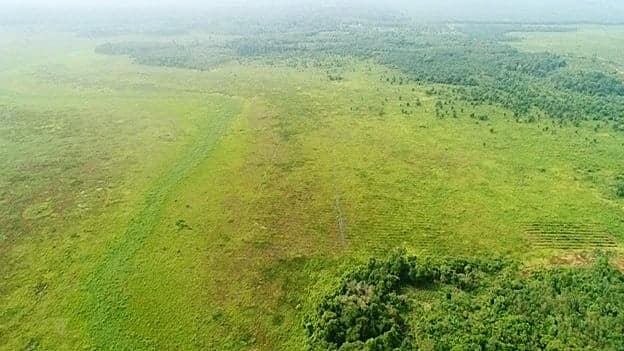
Author: GEC | September 2, 2021 | Best Practice
Peatland rehabilitation and alternative livelihood initiatives at Pekan (Extension) Forest Reserve within the Southeast Pahang Peat Swamp Forest (SEPPSF) with the local Orang Asli communities living adjacent to the forest land. Peatland rehabilitation by building and maintaining the canal blocking; alternative livelihood such as farming kelulut honey, established Mahang nursery, and weaving Mengkuang handicrafts for the local; and prevent forest fire by hiring local patrollers.
Ep 1: Peatland Rehabilitation in Pahang with local Orang Asli – Canal Blocking
274 hectares of Pekan (Extension) Forest Reserve within the Southeast Pahang Peat Swamp Forest (SEPPSF) were severely degraded due to poor peatland management causing fire outbreaks in 2018 until early 2019. Together with funders and partners, GEC has been rehabilitating the degraded area with the Orang Asli living adjacent to the forest. We build and maintain canal blocks that function to raise water table and reduce risk of peat fire. Since our intervention, there has been no fires detected. It is one of our initiatives in peatland conservation and rehabilitation – involving the local community to safeguard the peatland.
Ep 2: Peatland Rehabilitation – Alternative livelihood via Kelulut Honey
Have you heard of kelulut honey? It is a type of honey produced by the stingless bees.
In 2019, GEC, together with our funders and partners, initiated kelulut farming with the local indigenous communities living adjacent to the Southeast Pahang Peat Swamp Forest (SEPPSF). While we empower them on best management practices for peat swamp forest, we also hope to develop a potential alternative source of livelihood for them through various initiatives to improve their living condition.
Ep3: Peatland Rehabilitation – Alternative livelihood via backyard nursery
Meet Mak Nyap. She successfully established a Mahang nursery at her own backyard by actively involved in finding Mahang wildings.
Mahang (Macaranga spp.) is one of the pioneer tree species in peatland and it is suitable for enhancement planting in degraded peatland areas. With the establishment of Mahang nursery, Mak Nyap earns alternative income while contributing significant impact to the rehabilitation of degraded peatland areas adjacent to her home. Watch her inspiring journey in the video.
Ep 4: Community-based Peat Fire Prevention (Patrollers, FDRS and Water Level Marker)
What is one of GEC’s initiatives to prevent peat forest fire?
By hiring patrollers consisting of local Orang Asli communities living adjacent to the peatland.
Watch the video to see how the local communities are involved directly in preventing the peatland fire.
Ep. 5: Weaving Mengkuang Handicrafts (generating alternative livelihood as part of peatland rehabilitation)
Sabariah who lives adjacent to the Pekan (Extension) Forest Reserve within the Southeast Pahang Peat Swamp Forest (SEPPSF) has been empowered to weave mengkuang handicrafts. As part of GEC’s peatland rehabilitation effort at SEPPSSF, the women community were taught to hand weave mengkuang leaves. This initiative aims to make them become self-sustainable while preserving the peatland area that is abundant with mengkuang plants of Pandanus species.
Thank you to our funders and partners who have supported this initiative.
Funders – Yayasan Bursa (through its Bursa Bull Charge, 2019-2020), IOI Plantation (2018-2019), Bunge Loders Croklaan (2019), United Nations Development Program (UNDP, 2020-ongoing) and International Fund for Agricultural Development (IFAD, 2019-ongoing).
Key stakeholders – Government agencies (e.g. JAKOA, JPNP and Pekan District Office), private sector, social enterprises and local communities, especially Sahabat Hutan Gambut Kampung Tanjung Kelapa (SHGKTK).
Sources: https://www.facebook.com/watch/globalenvironmentcentre/863040440906201/
***
